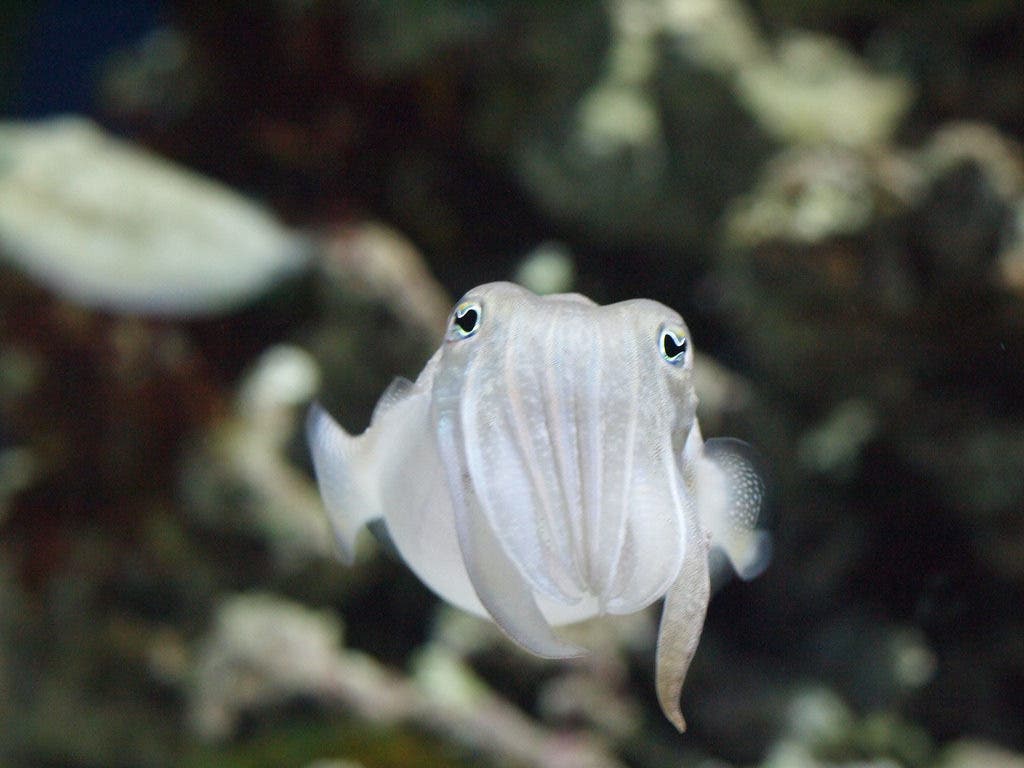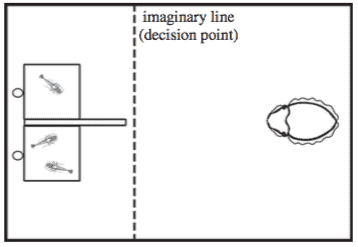Cuttlefish can count at least up to five, a new study from Taiwan’s National Tsing Hua University found. The team used a single-choice experiment to come to these findings, which makes the cuttlefish “equivalent to infants and primates in terms of number sense.”

Image credits Bill Abbott / Flickr.
Cuttlefish belong to the order Sepiida, and are relatives of other invertebrates such as squids, octopuses, or nautiliuses. They have the largest brain-to-body ratio among all invertebrates, eight tiny arms, and employ a specialized pair of tentacles covered in suckers to nab their prey from afar. All their hunting of shrimp and crabs means that cuttlefish need to make constant decisions about which prey to target — so it would make sense for them to be capable of higher cognitive skills such as counting. And here’s where that big brain comes in handy.
Tsang-I Yang and Chuan-Chin Chiao of Taiwan’s National Tsing Hua University hatched Sepia pharaonis eggs in laboratory conditions and waited until the animals were a month old. They wanted to find out if cuttlefish are actually capable of counting, so it was important to give them some time to develop. Then, they started to test the young cephalopods‘ math skills.
Each test consisted of the researchers presenting a cuttlefish waiting in a tank with a two-chambered box made out of clear material. In each of the boxes, the researchers would place a number of tasty shrimp for the cuttlefish. The screen that separated the compartments jutted out towards the animal to force it to choose just one of the two. After the cuttlefish made its decision and swam to either side of the screen, the researchers took the box out of the water — this was done to control how hungry they are and what effect this would have on their choice. The cuttlefish were fed at the end of the testing session.

Image credits Yang TI, Chiao CC (2016.)
The duo put one to five shrimp into each box to test how well the animals can count. If there were five shrimp on one side and one in the other, the choice was pretty easy to make. But the team also presented them with a choice between three and two shrimp, or five over four, choices which aren’t easily made without the ability to count.
All in all, 54 cuttlefish were tested. The team reports that unsurprisingly, they had no difficulty picking several shrimp over a single one — but they also aced every other test they were presented with. They were much more likely to pick the side of the box with more shrimp, even when choosing between four and five. They took more time to decide as the ratios between the number of shrimp in the boxes became smaller (such as 5 to 4 vs 2 to 1.) Chiao says this is evidence that the cuttlefish were actually counting the shrimp on each side, rather than judging the quantities at a glance.
The team also ruled out the possibility that the animals were just picking the largest bunch of shrimp they could find — when the team crowded small numbers of shrimp in in tighter cages to make them seem denser, the cuttlefish weren’t fooled. They still picked the side with more shrimp. The researchers also used boxes of dead shrimp to test if the cuttlefish were just going for the liveliest bunch — but here too, they went for the side with more shrimp.
So they can do math, but they aren’t just cold calculating adding machines. They prefer live victims, and when offered a choice between one live shrimp or two dead ones, they chose the first. When choosing between one big, fat, tasty shrimp or two smaller ones, hungry cuttlefish went for the former, while cuttlefish that had already eaten chose the latter. The team believes this may be because while one big shrimp is more tempting, it’s also more difficult to tackle with. Cuttlefish that weren’t particularly hungry simply didn’t think it was worth the risk
Chiao says he wasn’t surprised by the results. Although the experiments stopped at 5 shrimp, he suspects that the animals may be able to count higher.
“We know that [the] cuttlefish has a complex brain and a sophisticated neural system,” he says.
“Cuttlefish have to search for food constantly, so having number sense is important for their life.”
One-year-old babies can judge the difference between 1, 2 or 3 items, but don’t seem to do well above that limit. Rhesus macaques of the same age can reliably count up to 4. So, the authors write, the study “implies that cuttlefish are at least equivalent to infants and primates in terms of number sense.”
The full paper “Number sense and state-dependent valuation in cuttlefish” has been published in the journal Proceedings. Biological sciences / The Royal Society.


